The Soft Matter Physics Lab at the Physics Department of the University of Ioannina (UoI) has recently acquired a European and National Sources Fund and is now part of the Network of Research-Supporting Laboratories.
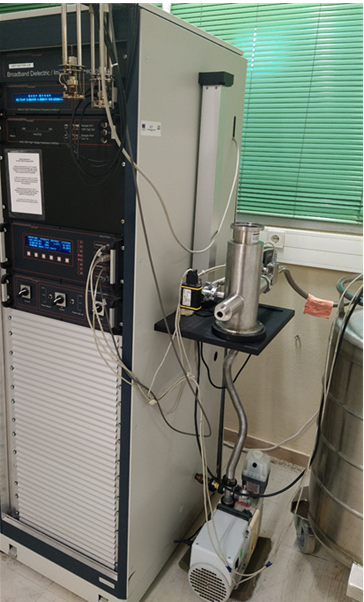
Two dielectric spectrometers (Novocontrol concept 40) that include: high resolution (minimum \( \tan\delta \sim 2 \cdot 10^{-5} \) ), dielectric analyzer ALPHA-ANB with DC-Bias \(\pm 40\; V\; (70\; mA)\), with a frequency range from \(3\;\mu Hz\) to \(20\;MHz\), active head sample cell ZGS, QUATRO temperature controller for measurements in the range from \(-160\) to \(+400\; ^{\circ}C\).
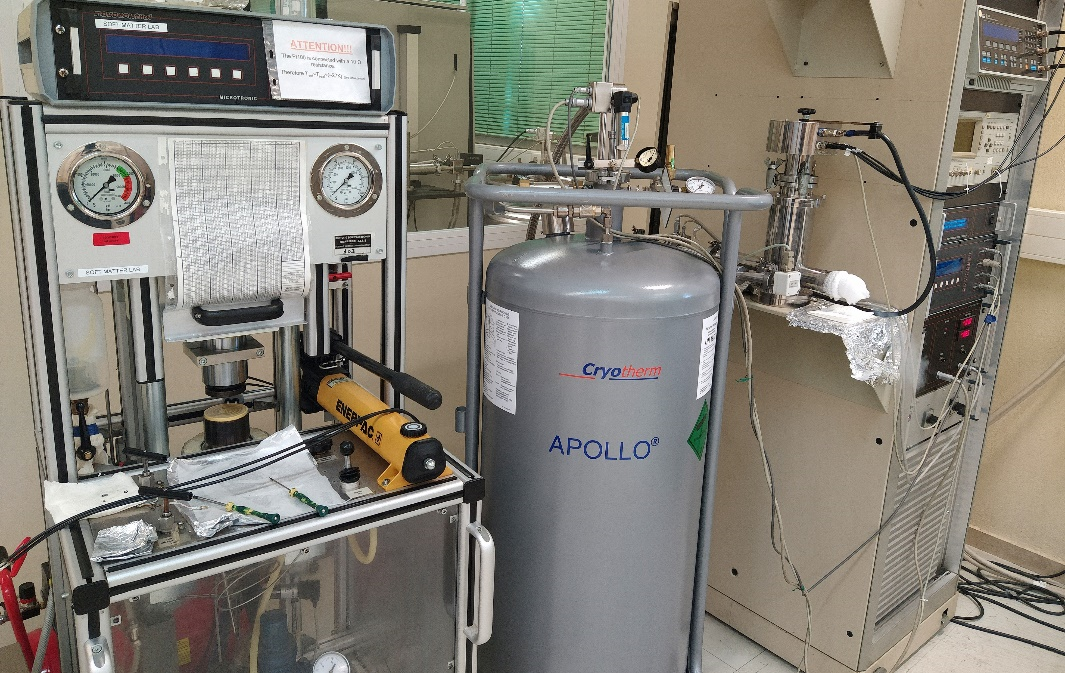
In addition to \(T\)-dependent studies, the lab at the UoI is equipped with a \(P\)-dependent dielectric spectroscopy for pressures in the range from \(1\) to \(2500\; atm\). The UoI is recognized for the first studies of homopolymer (local and global polymer dynamics) and polymer blend dynamics (dynamic heterogeneity) at elevated pressures. In addition, pressure-dependent studies on polypeptides, performed solely at the UoI, were instrumental in clarifying the origin of the polypeptide liquid-to-glass transition.
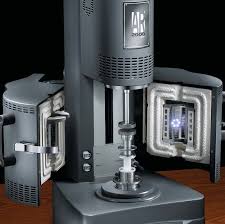
The rheometer (TA Instruments, model AR-G2) includes a magnetic bearing that allows for low nano-torque control (minimum torque: \(0.01\;\mu N\cdot m\), maximum torque: \(200\;mN\cdot m\), torque resolution: \(0.1\;nN\cdot m\), displacement resolution: \(25\;nrad\)). It is equipped with Peltier plates, Environmental test chamber for temperature control from \(-160\) to \(+600\;^{\circ}C\), camera with image capture, small-angle light scattering unit for simultaneous rheology/scattering measurements (scattering angles from \(6\) to \(26.8^{\circ}\), corresponding length scale from \(1\) to \(4.6\;\mu m\)).
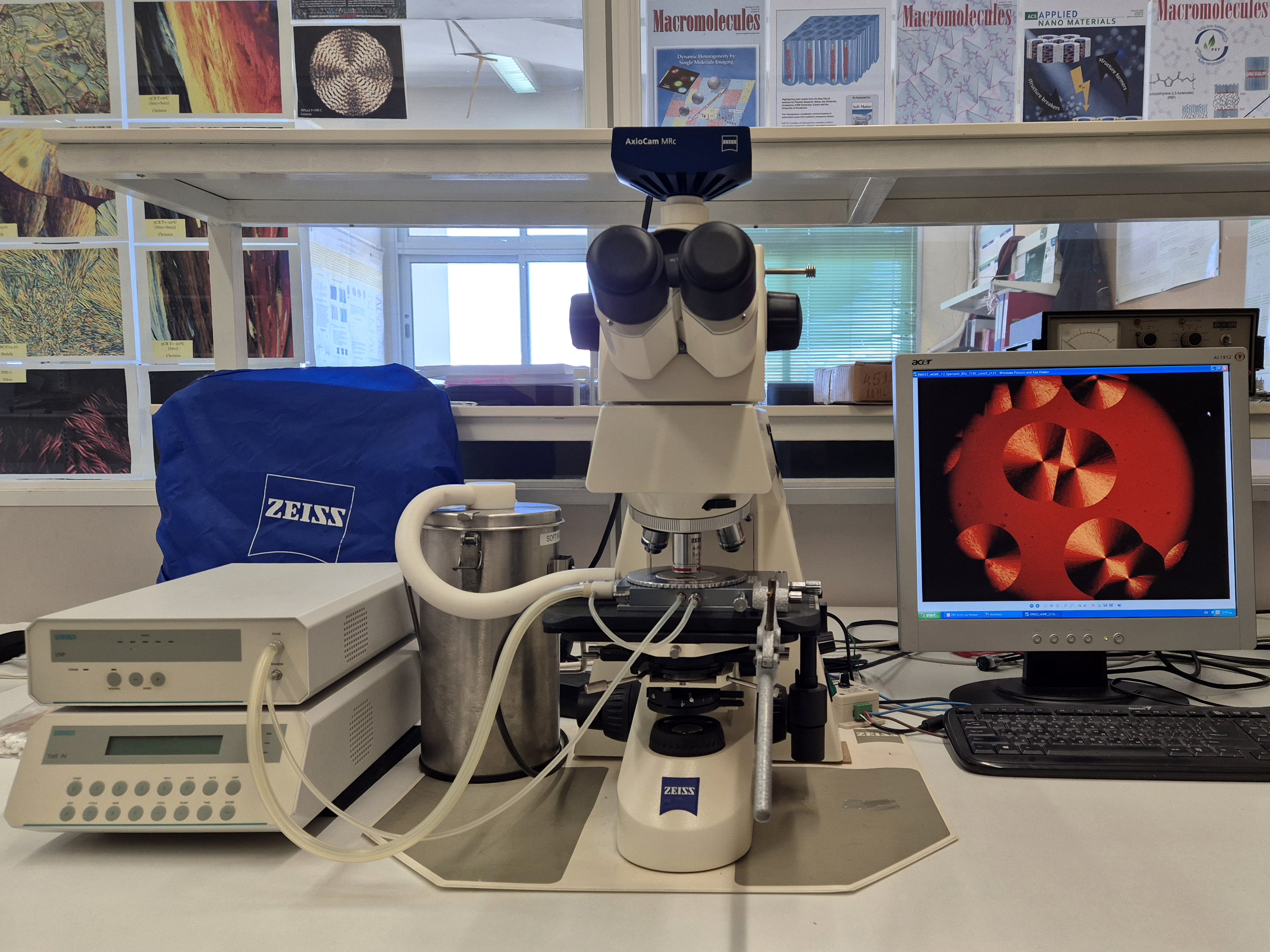
Polarizing optical microscopy (Zeiss Axioskop 40, equipped with a video camera and a fast frame grabber) and with a Linkam temperature control unit (model THMS600, with TMS94 temperature programmer, temperature range \(-196\) to \(600\;^{\circ}C\)) will be employed in the Liquid Crystal/AAO studies.
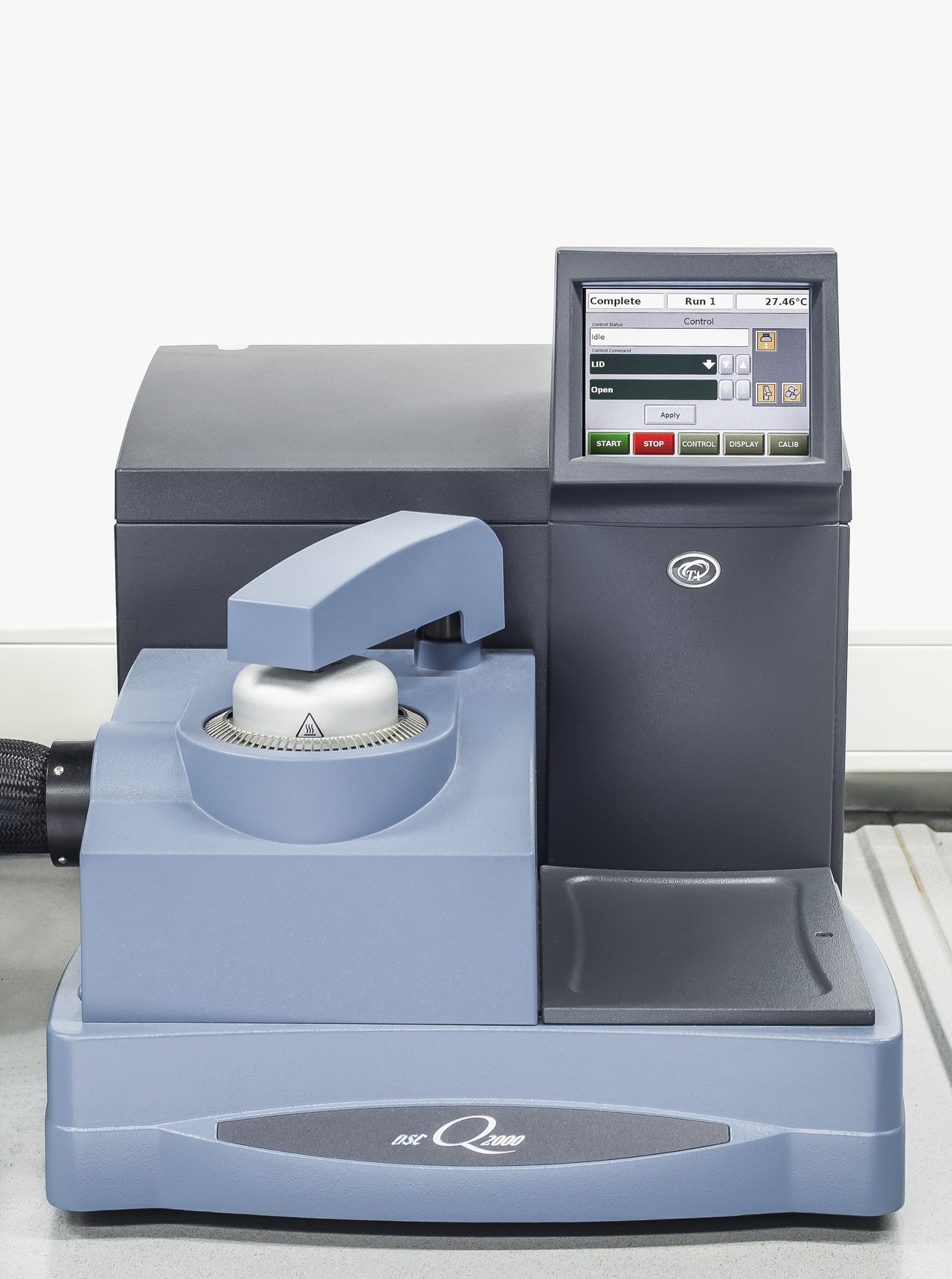
DSC Q2000 (TA Instruments), temperature range: \(-180\) to \(500\;^{\circ}C\), DSC and TM-DSC.
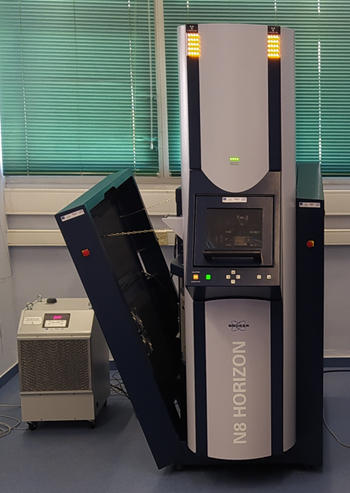
N8 Horizon vertical setup (Bruker), for structure measurements in both small (SAXS) and wide (WAXS) scattering angles, and grazing-incidence SAXS (GI-SAXS). Uses a \(50\; W\) \(CuKa\) radiation Iμs micro-focus air-cooled source, with integrated MONTEL optics. Capability of measurements in the temperature range of \(25\;^{\circ}C\) to \(300\;^{\circ}C\) and \(-30\;^{\circ}C\) to \(-120\;^{\circ}C\), including the detectors:
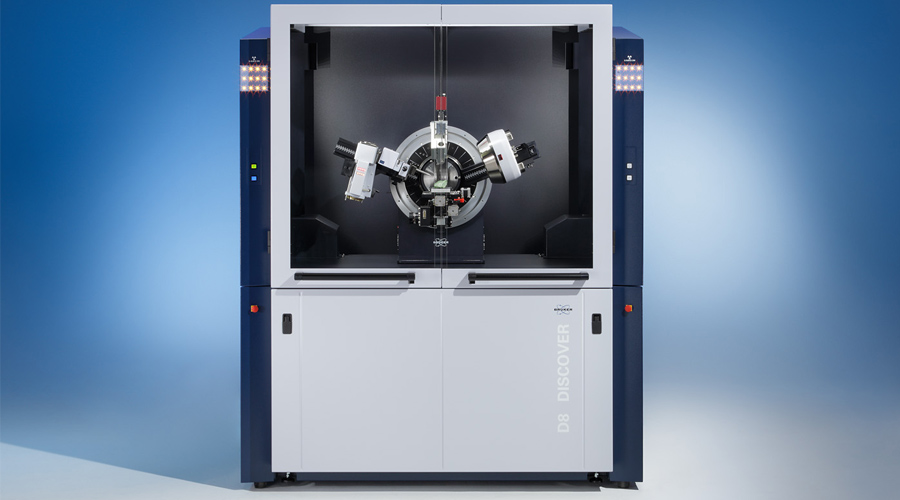
X-ray powder diffraction unit of the Research Supporting Laboratories of the UoI; D8 Advance Bruker diffractometer, \(CuKa\) (\(40\;kV\), \(40\;mA\)) radiation, equipped with a secondary beam graphite monochromator.